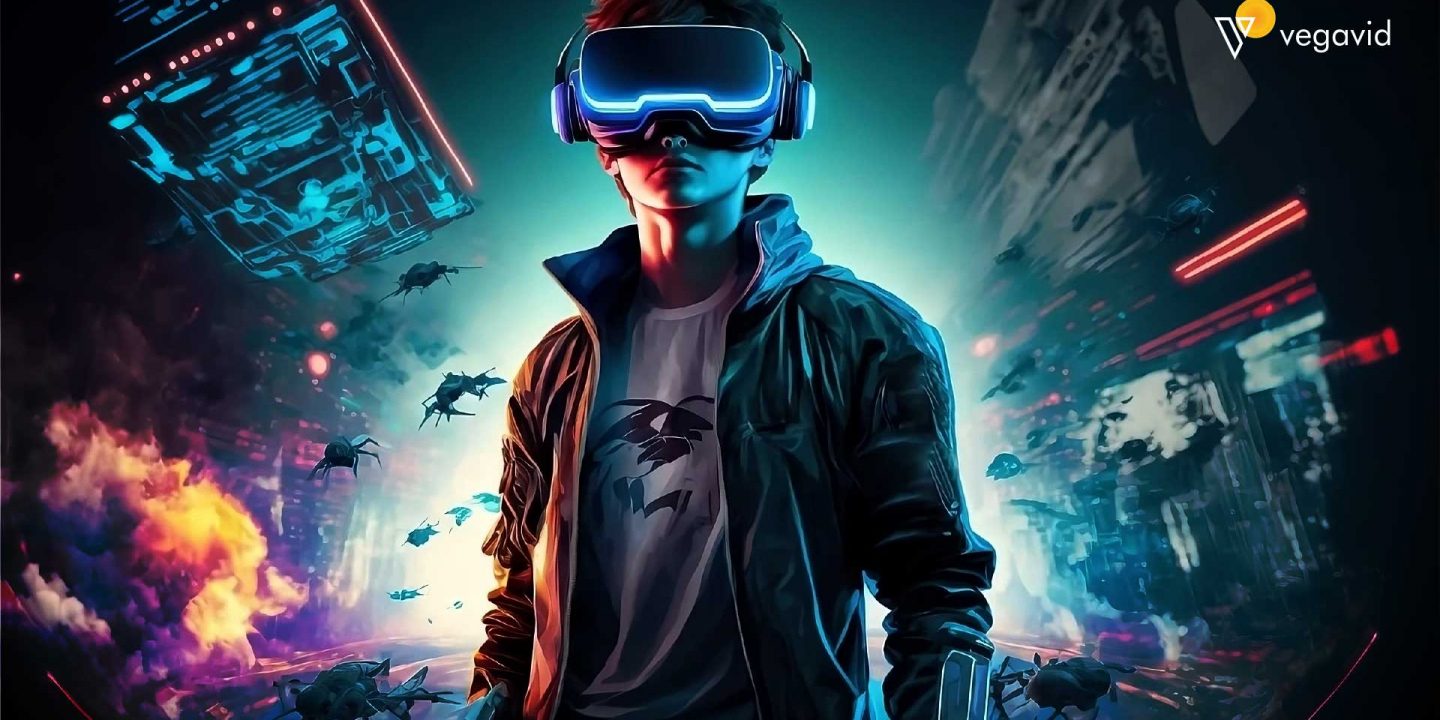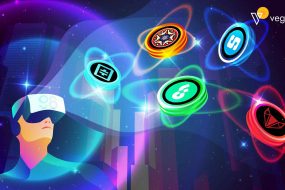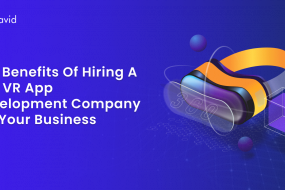
As virtual environments continue to expand and merge more seamlessly with real life, digital twins will play a pivotal supporting role. A digital twin essentially creates a virtual representation of a physical object, person, place, or system that can then interact within digital worlds. By leveraging technologies like sensors, simulations, machine learning, and more, digital twins form living mirrors between the physical and virtual realms.
This dynamic synchronization of data flows in both directions enables changes made to one counterpart to instantly affect the other. If parameters are modified on the virtual copy, the physical entity updates to match in real time and vice versa. This blog aims to explore the foundational concept of digital twins and how their technology currently functions. It will then analyze several leading applications of twins today along with promising future directions, particularly regarding their role within metaverse-style virtual environments. The post seeks to examine digital twins’ underlying principles while envisioning exciting possibilities for how these living mirror models may continue merging our physical and digital experiences.
What is a Digital Twin?
A digital twin is a virtual replica of a physical object or system that uses data to accurately simulate the real thing. As more products and machines become connected through sensors and the internet, digital twins are being created to represent them digitally.
For example, a factory might have a digital twin that acts as a virtual simulation of the entire factory floor. It would collect real-time data from all the machines, tools, and systems and use that information to create a running digital simulation. This allows managers to see how the production line is performing at any moment. They can test changes virtually before implementing them in the real world.
Cities also have digital twins where data from traffic systems, weather sensors, and more is used to build highly accurate virtual models. Engineers and planners can try new road layouts or transit systems in the digital twin to see how traffic flows might change. Digital twins of airplanes, buildings, or vehicles work similarly by gathering real data to create virtual copies that mimic real things.
Having a digital representation allows companies or governments to test scenarios that may be too complex, risky, or expensive to try on real systems. Digital twins provide a safe, cost-effective way to plan and test improvements before making changes to the physical objects they represent.
Applications of Digital Twin Technology
Digital twins have many useful applications across different industries. Manufacturing companies use twin simulations to optimize production processes. Engineers can test virtual prototypes without interrupting factory equipment. Machine operations and failures and then be predicted and prevented. This improves efficiency and reduces downtime.
Infrastructure agencies create digital twins of buildings and cities. Planners test emergency response scenarios to minimize risks. Virtual models also help design smarter infrastructure systems. Traffic and utility networks are optimized in simulations before installing new pipes or roads. Structure health is monitored to schedule maintenance.
Aerospace engineers rely on airliner twins to develop enhanced designs. Virtual testing catches defects early, lowering costs. Plane systems are thoroughly validated in digital environments. Flight simulators provide another application – pilots train using realistic virtual aircraft.
Automakers simulate vehicle usage to improve reliability. Customer driving habits are analyzed anonymously. Twins help develop connected features by simulating internet-of-things integrations. Alternate designs are evaluated without building physical prototypes. Across many fields, digital twins are transforming how we design, operate, and maintain complex systems. Their predictive capabilities also help ensure public safety.
The Synergy: Digital Twin Meets the Metaverse
Digital twins and the metaverse are two of the most talked about technologies today. Bringing them together can create powerful synergies and new possibilities.
Integrating Digital Twin into the Metaverse
The emergence of persistent shared virtual spaces like the metaverse creates the ideal landscape to implement digital twins at immense scales. Assets like buildings, vehicles, and devices may have corresponding virtual representations that exist perpetually within these domains. Users can engage digital twins of people, places, and things through interactive avatars, expanding real-world interactions into metaverse settings.
Dynamic synchronization between physical and virtual assets keeps twins in lockstep with real conditions. When integrated into metaverse architecture, twins essentially bring the synchronization of virtual and physical realms to an unprecedented level. The massive popularity and persistence of platforms like metaverses incentivize further development of twins that transcend individual applications.
Real-time Data and Simulation
Digital twins thrive through streams of real-time operating data from sensors, CCTV, GPS transponders, and beyond. When plugged into metaverse networks, this bounty of IoT and environmental feeds fuels highly complex simulations. Virtual replicas flawlessly mirroring physical behaviors at large scales help suspend the disbelief of immersive metaverse experiences, all while unlocking novel uses combining real and virtual. Simulations may forecast infrastructure durability, predict component failure or model disaster response plans through living high-fidelity digital proxies. Meanwhile, the metaverse provides a vast testbed for interaction beyond normal reality constraints.
Enhancing Virtual Experiences
Perhaps most exciting, fusing digital twins with metaverses magnifies opportunities to radically enhance how people work, learn, and play in virtual environments. Detailed avatar twins unlock new interaction types between virtual organisms. Heritage sites and complex systems spring to interactive life through photoreal proxies.
Production line and urban planning tasks morph into aspect gaming. Metaverse therapy simulates situations too delicate for reality. Virtual tourism takes on fluid authenticity as Old Faithful erupts identically to its physical sibling. Socially, humanizing AI companions via digital likenesses could curb loneliness pandemic effects both virtual and real. Infinite scaling grants every individual a parallel immersive world, and digital twins personalize each to match reality.
Benefits of Combining Digital Twin and the Metaverse
Digital twins and the metaverse together present immense opportunities to improve processes and enhance experiences across many sectors. Integrating these complementary technologies unlocks several impactful benefits.
Enhanced Training and Learning
Within metaverse platforms, digital twins open many opportunities to revolutionize training simulations and education. Instead of traditional textbooks, students could use virtual replicas to learn complex systems interactively. The medical field has started using anatomy twins to practice surgery without risking lives. In the metaverse, immersive virtual patients and operating theaters would make remote or supplemental surgical training far more realistic.
Beyond healthcare, mechanics could hone repair skills through virtual vehicle twins mirroring real-world components and issues. Factories may train new workers inside virtual copies of the production floor. Students worldwide could access identical interactive learning environments via their digital avatars. Pairing twins with augmented reality could even overlay interactive virtual systems onto real cafeterias or classrooms.
Virtual Prototyping and Testing
Designing physical structures, vehicles, electronics or other products involves extensive prototyping that consumes large budgets and time. Digital twins allow moving much of this process virtually through detailed simulated replicas. Engineers could test theoretical aircraft, vehicles, and machine designs using virtual twins long before building physical models. Interactive avatars would feel G-forces and better understand ergonomics within virtual cockpits or equipment cabins.
Entire virtual production lines and factories help optimize processes. Detecting flaws early saves prototyping costs and improves quality. Within the metaverse, buildings and entire cities may exist as living digital sandboxes where planners can model sustainable design iterations at scale through virtual representations connected to real-time data streams.
Sustainability and Urban Planning
Digital twins synergize well with pursuits like efficient smart city development, transportation simulation, and planning for resilient infrastructure networks. Virtual urban replicas combining GIS data with IoT feeds would empower sustainability tests. Planners could foresee population shifts, model renewable installations or predict traffic patterns by adapting road layouts through living simulations. Simulating disaster scenarios assists in emergency response preparation.
Network twins of water, power, and transport utilities ensure new designs consider contingencies. Augmenting master plans onto landscapes using AR aids public consultation. Paired with the persistence and scale of metaverse platforms, digital models offer foresight into sustainable long-term city evolution.
Entertainment and Social Interaction
Perhaps the area with the widest metaverse applications involves leveraging digital twins for virtual sociability, tourism, and gaming. Mirroring favorite celebrities or fictional characters as interactive virtual beings opens new entertainment. Historically accurate replicas let users truly experience events. Touring models of heritage sites engage broader audiences. Gamers embody customizable avatars within virtual worlds crafted from digital replicas.
Social meetups using locations modeled in intricate detail foster togetherness without distance barriers. Streaming one’s outfit or appearing as an anime persona could liven virtual interactions. With AI assistance, virtual friends may one day interact indistinguishably with humans. The metaverse exponentially expands such applications through limitless persistence and scale.
Future Trends and Possibilities
Digital twins have many future possibilities in the developing metaverse. As virtual worlds become more advanced and realistic, digital twins will play an important role. They allow people and things to have a virtual presence.
One trend is digital twins of people. In the future, our avatars may have detailed digital twins that replicate how we look, behave, and interact. These digital twins could learn from our real-world actions. If we do an activity in virtual reality, our twin may get better at it too. Digital twins of people may one day feel almost like the real thing to interact with.
Personal digital twins could help people in new ways. If someone gets hurt, their digital twin data may help doctors. Twins could continue living virtually if something happened to the real person. They may also allow new experiences like living to a super old age virtually.
Places will also have digital twins. Cities, buildings, parks, and other spaces will be recreated in incredible detail. Twins of places will allow new uses. Architects may design and test buildings virtually first. Students could virtually visit historic places. Complex systems like power grids or railroads may have digital twins to model improvements or what-if scenarios.
Manufacturing is another area that will see expanded use of digital twins. Car companies already use twins to test designs virtually. In the future, nearly any physical product may have a detailed virtual twin made during development. Twins will catch design flaws early and help mass-customize products. Entire virtual production lines and factories will optimize processes.
Connections between real and virtual worlds will also grow. Sensors in real objects may constantly update their digital twins. Changes made to twins could also affect their physical things. Together real and virtual versions form a tightly linked digital-physical system. Such blended realities open many possibilities yet to be discovered.
It can be said digital twins have the potential to transform how we experience virtual worlds like the metaverse. Detailed virtual representations of people, places, and things will create new ways of interacting and using data to benefit our real lives. Their role and possibilities will continue growing as virtual and augmented realities become more all-encompassing parts of daily life.
Conclusion
In conclusion, digital twins have tremendous potential to transform how we experience and interact with virtual places like the metaverse. As virtual worlds advance and merge more with physical reality through technologies such as augmented reality, our digital representations will play a central role. Detailed virtual models of people, objects, infrastructure, and systems using twin technology can create new ways of interacting, problem-solving and even continuing our digital presence. Everything from scientific simulation and design optimization to remote assistance, personalized learning, and blended physical-virtual experiences may be enhanced. Their applications and the very concept are sure to evolve in novel and unexpected ways over time.











